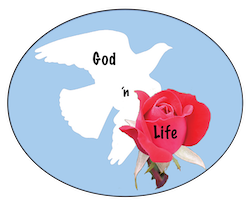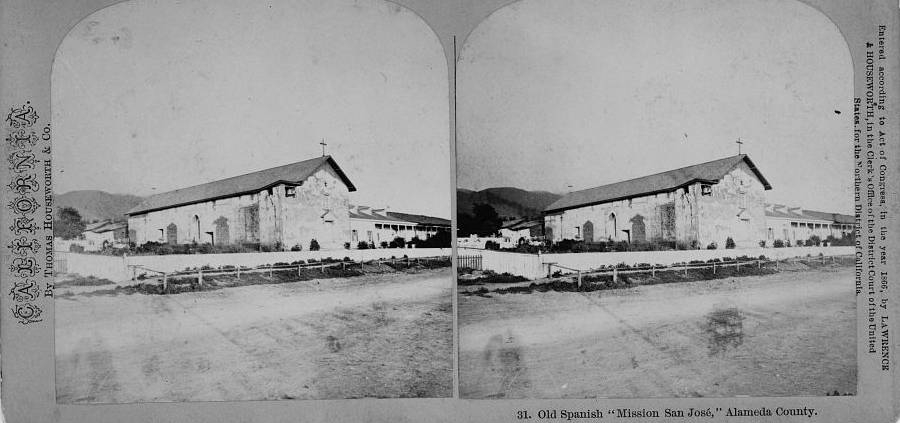Seeing Through the Eyes of God
by Julie A. Ferraro

A tiny mission church nestled against a hillside in a remote part of the Navajo Nation features a mural behind the altar of Jesus as an Indigenous shepherd. Another piece of art originating from that same locale is a variation of the Franciscan San Damiano crucifix, but Jesus stretching his arms wide is Navajo, and the other figures are those who played a role in how Christianity came to the native peoples.
To say the least, these depictions were not created by whites.
Over the past two years, since the murder of George Floyd in Minnesota, the subject of racism and discrimination has come to the fore again. While a lot more media coverage, discussion, and action are occurring in the wake of that tragedy, it is a problem that has existed since the beginning of recorded time.
Sadly, it seems to be human nature for people to look at those who are different and label them as inferior or unworthy of the same respect and consideration as those who fit into their definition of “same.”
Going back to the days of Moses, for instance: the Egyptians viewed the Israelites as different, primarily for their worship of one God, instead of a plethora of deities. They enslaved the Israelites to prevent them from increasing in number and overthrowing the established order.
Fast forward a few centuries, and we read in Scripture—and many other sources—how Romans expanded their empire to encompass much of the known world, forcing the various cultures to adopt Roman laws and, often, their gods. If you weren’t a Roman citizen, like Saint Paul, you had very few rights.
The examples of discrimination based on race and religion are myriad through the millennia, up to today. Genocide of a particular group by another group, as with the Holocaust or the Chinese treatment of the Uyghurs, is nothing new.
One of the reasons protests were mounted against the canonization of Junipero Serra included his inaction while Spanish troops working their way up the California coast in the 18th century were decimating the native populations. The attitude of “assimilate or be punished”—including the punishment of death—has been too prevalent in global history, and in the U.S. (Unfortunate, too, how church authorities refused to dialogue in person with the tribal elders making the protests, or ignored them entirely.)
Missionaries sanctioned by the church have traveled to all corners of the planet, ostensibly to “share the Good News of Christ.” What has happened is that local cultures, customs, and languages have been lost as these peoples have been forced to accept the ways of white European Christians.
The church, and many of its institutions, is finally acknowledging its complicity in acts of racism and discrimination. Some remain in a state of denial, however, failing to see the face of Jesus in every human being. It’s a sort of “selective Christianity” that just doesn’t wash.
The tendency for a human being to look at someone else and, automatically, create a laundry list of labels—race, religion, social status, age, weight, and so on ad infinitum—is a trait that must be rooted out from our collective subconscious (although some people do this as a conscious choice). The transformative power of God’s love must be allowed to flourish in our hearts, and not simply be paid lip service on Sundays during Mass—and too often, not even then, given the experiences of some who try to make their home in a parish but, because of their perceived “differences,” are ostracized.
I can personally attest to the richness of liturgies when different cultures are integrated into the prayers, music, and ritual. The same can be said for life in the secular realm: attending festivals and fiestas where food, dancing, and games are drawn from a specific culture is an incredibly broadening experience.
It all comes down to this: we are all human beings, made in God’s image and equally loved. There is truly no “white supremacy” or any supremacy of one group over another. The origin of those fallacies is shallow thinking by those who feel threatened by a difference that doesn’t really exist.
We must all open our hearts, open our minds, open our eyes and ears to accept the truth that every person on this earth is Christ—the only label we should ever apply to another human being. ♦
Julie A. Ferraro has been a journalist for over 30 years, covering diverse beats for secular newspapers as well as writing for many Catholic publications. A mother and grandmother, she currently lives in Atchison, Kansas. Her column, “God ‘n Life,” appears regularly in Today’s American Catholic.
Image: Stereoscopic photo of Old Spanish “Mission San José,” Alameda County, California, 1866.
by Julie A. Ferraro





Leave a Reply
Want to join the discussion?Feel free to contribute!